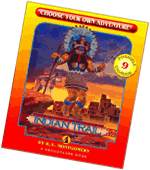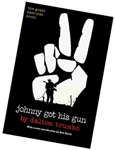Wikis Projects
As you consider the development of your own wiki, look at examples of what others have developed. On this page, you'll explore projects by subject area, categories of projects, and high level thinking projects.
Ask Yourself: How are these wikis different than traditional web pages? How are young people involved in the design and development of the wikis? What are the features you find most and least interesting?
Creativity Thinking and Writing

Balance assignments that involve critical thinking with those that engage young people in creative thinking.
Go to the Read Write Wiki wikispace. Explore each project. Choose one to try.
 The key to an effective wiki writing project is creating a positive, supportive environment for writing. Go to Annette Griessman's blog on Writing Good Fiction. It contains some wonderful story starters, and ideas for getting started with plot, setting, characters. Think about ways to incorporate student brainstorming and creative writing into your own wiki project.
The key to an effective wiki writing project is creating a positive, supportive environment for writing. Go to Annette Griessman's blog on Writing Good Fiction. It contains some wonderful story starters, and ideas for getting started with plot, setting, characters. Think about ways to incorporate student brainstorming and creative writing into your own wiki project.
Check out the Young Illustrator Wiki and Screen Plays and Wordless Books wiki.
Explore Characters in Literature and Settings in Literature. Edit one of these to include specific activities, assessments, and examples.
Read a Choose Your Own Adventure book such as Indian Trail. Go to the Choose Your Own Adventure official website. Go to the R.A. Montgomery's Author Blog that lots of information about writing. You can read secret online endings for many of your favorite CYOA books.
Go to the Choose Your Own Adventure wikispace. Add your own adventure!
Multi-sensory Sharing
Use wikis to organize original information. Think of the wide range of multi-sensory information that can be collected and shared. What are all the ways you can share your understanding of a person, place, thing, or idea?
Explore Young Illustrators and Insects projects.
Read the lesson A Collaboration of Sites and Sounds: Using Wikis to Catalog Protest Songs. This high school project involves students in connecting literature such as To Kill a Mockingbird to social, political, and economic justice issues of a particular time period. This lesson contains lots of worksheets, guidelines, and resources. Check out the wiki rubric (PDF) and project guidelines (PDF). Resources include Wikipedia: Protest Songs and Ontario Coalition Against Poverty. Use the Protest Songs wiki and sample page as an example.
Use wikis as a tool for electronic portfolios. Check out Helen C. Barrett's wikispaces project.
Across the Curriculum
 Make reading and writing connections across the curriculum. Go to Day Drives and Humpback Whales for an idea.
Make reading and writing connections across the curriculum. Go to Day Drives and Humpback Whales for an idea.
World Culture 7th Hour and World Culture 8th Hour - students write a story that include longitude and latitude, the ask reader to identify the locations. For instance, Sarah does a Criminal Pursuit Around the World story and Jacob writes a riveting story about a lost suitcase. These assignments combine writing, World Culture, and Geography.
World War I: Poetry Visualization Project - Students read Johnny Got His Gun by Dalton Trumbo (1938). Students write a poem from the perspective of a WWI soldier incorporating historical photos.
Explore Studying Societies at JHK. Notice that this project uses PBwiki.
Project Wikis by Subject Area
- Wiki Classrooms
- Smith's Class from Hannibal Missouri
- English, Language Arts, and Literature-based Projects
- Discovery Utopia - Middle School
- High School English Projects
- Holes Novel Study
- Novels and Plays in 11th Grade English - An overview of readings
- Teen Poetry Wiki - An Online Community of Teen Poets
- The Wright 3 - Elementary Novel Study
- Math Projects
- Science Projects
- Code Blue - In this sixth grade project, the home page projects links to body system information. Each page focuses on a different topic. Many are interviews with doctors.
- Forensic Science Wiki
- Insects - Grade 4
- Rainforest Animals - Grade 3
- Results of Local Water Testing
- Science One (Middle School)
- Science Two (Middle School)
- Social Studies Projects
- Ancient China - Grade 6
- Colonial America
- Civil War - Middle School
- GCSE History Wiki - High School (Who's Doing What)
- Political Parties and Elections Projects 2007
- Progressive Era - Grade 8
- Stanley Tech History Wiki
- Sutton in Ashfield - Local History
- Turning Points - US History
- US History Bums
- WikiRoma - Roman History
- World War I Projects
Types of Projects
Collaborative Problem Solving. Wikis provide an environment for groups to share their understandings and come to consensus. The wiki can be used to generate lists, narrow topics, outline options, debate issues, make suggestions, and even vote.
- What Does It Mean To Be Australian? - middle school students (check Graham Wegner's teacher blog too; read his reflecting on wikis with children)
Collaborative Research. Whether working simultaneously on a project or over a multiple semesters, researchers can collate and share their data using a wiki. Consider projects such as local history.
- AMS Through the Years
- Studying Societies at JHK - year-long project
Collaborative Writing. Wikis are often used for collaborative authorship. In other words, a group of people get together with a specific final product in mind such as writing an article or letter; editing a book, guide, manual, glossary; or creating a knowledge base.
- Rhetoric and Composition - open-source textbook
- Second Life Wiki - user guide
- Wikipedia - a free encyclopedia anyone can edit
- WikiTravel - a free, up-to-date, reliable world-wide travel guide
Collections. Wikis are great for collections of information such as oral histories, databases, archives, and posting prose. Consider collections of information that aren't available elsewhere.
Critiques, Evaluations, and Reviews. Get students involved in sharing their evaluations of books, movies, articles, and other materials. Start with a summary and links to professional reviews. Ask students to critique the reviews of others and extend the discussion by providing examples of specific likes and dislikes.
- Student Book Reviews - Elementary
Dynamic Journal or Notebook. Wiki software can be used to organize notes, ideas, and brainstorms. It's a great tool for a book club, study group, or club to organize information. Although generally thought of as a collaborative tool, single-user wikis are a way to collect, organize, and reflect on one person's ideas. The activity is focused on recording ideas and process rather than coming up with a final product.
Electronic Portfolio. Some wikis are used to for collecting and organizing resources for an electronic portfolio. A wiki is an effective tool for this activity because it allows a learner to constantly select and update materials. It's also a way for students to submit projects to teachers.
- Portable C - Elementary Student Wikis
Portal. A portal is designed to be "the" starting point for a particular topic or subject. In wikipedia, the refer to "main pages" on topics or area. Originally, portals led people to other resources, but they are increasingly being designed as wikis and contain original information. They are an opportunity for scholars and others to work collaboratively to help people see the "big picture" of a topic and how it connects to related to related fields such as arts, biography, geography, history, mathematics, science, society, and technology.
- Portal: Food
- Portal: Rhetoric
- Portal: Scouting
- Portal: Trains
- For more, see the Portal/Directory
Resource Aggregator. Like a bibliography, mediagraphy, or pathfinder, a wiki can be used to organize links to websites, blogs, and other electronic materials.
Study Guide. A wiki is a great tools for creating a collaborative study guide.
- Frankenstein - notice the links on the lower left to links, letters, and chapters
Virtual Conference. Rather than meeting face-to-face, wikis can be used to share resources as part of a virtual conference activity. Because most wikis allow uploading of files, these conference wikis can hold documents, visuals, audio, and video materials. Explore a Wiki Conference lesson plan.
Virtual Field Trip, Museum, or Gallery. Provide a virtual experience for people visiting your wiki. Organize digitized artifacts, examples, art work, music, or other materials for others to enjoy. Focus on original works. Start with an artifact. Learn about the history of that artifact. Then, place the item in a fictional story. Be sure to use factual information in your story. All students could write based on the same artifact or different artifacts.
Try It!
Choose a type of project. Explore the examples. Design your own project.
Focus on High Level Thinking
Wikis are becoming a popular tool in learning because they involve high-level thinking and information skills.
Collaborative Learning. Wikis allow learners to participate in a project larger than themselves. Participants are able to learn from each other and expand their thinking about a topic by working as a team. In addition, it's easy to go back and track who, did what, when.
Inquiry. Wikis involve learners in asking increasingly sophisticated questions related to their topic. After the initial excitement about the topic and exploration of essential questions, learners begin to assimilate new information and draw inferences. This leads to reflection and additional questions. This recursive process leads to increasing complex questions, more indepth analysis, and deeper understandings. These abstract connections can be made more concrete for learners through the creation of wikis. Features such as hyperlinks allow contributors to share their mental linkages among pieces of information.
Information Organization. Wikis encourage learners to think about how information can be organized to maximize understanding. For example, wikis can use alphabetical, chronological, hierarchical, geographical, or thematic approaches. Some people use outlines or visual maps (i.e., cluster map, flowchart, mindmap) for organization. Others design around regional locations, events, characters, key words, genre, categories, or other ways of thinking about a topic. Another approach is to focus organization around essential questions or problems.

